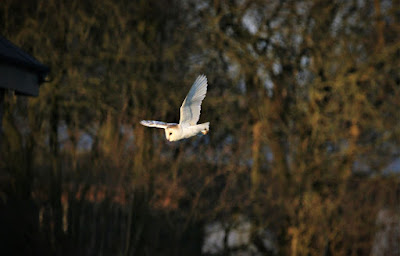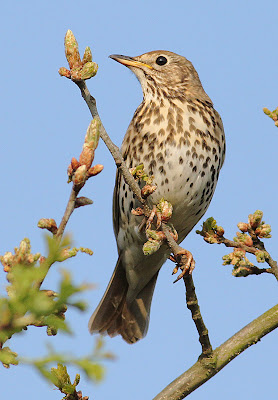There wasn’t much light when on Saturday morning I set off in the direction of Pilling. When I reeled off a bundle of shots at a hunting Barn Owl, the resulting pictures were badly under. I checked the settings were correct, and they were, so I think the camera and lens had been out of action for so long in our dreary winter the two had forgotten how to interact together. I rescued a couple of frames that are still pretty poor.
The light was slightly better when the Roe Deer appeared and where speed on the button was essential before the animals ran into the distance. Our local deer are very shy and wild so don’t hang around for portraits.
It had been ages since my last visit to Conder Green and where today the usual species were on display. Winter work by RSPB to build up the islands has led to a massive increase in the number of Black-headed Gulls looking to begin their breeding cycle any day. Summery Black-headed Gulls are handsome creatures but their large colonies are both noisy and messy.
Black-headed Gull
Group names for a collection of Black-headed Gulls include a flotilla, a screech, and a squabble. It will be interesting to watch the interplay between so many gulls and the annually returning Common Terns in a month or so. Although both species can and do nest in close proximity the terns may have a shock to see so many gulls on their islands.
The Black-headed Gull is the most widely distributed seabird breeding in the UK, with similar numbers breeding inland as on the coast. The majority of the breeding population are resident throughout the year, with numbers being greatly bolstered during the winter months by birds from Northern and Eastern Europe, especially in the east and southeast of England. Black-headed Gulls breed throughout the middle latitudes of the Palaearctic and have recently formed a breeding outpost in North Eastern North America.
Just recently I heard of nest robbers who are looking forward to the Black-headed Gull nesting season. Read the link below to see why a Black-headed Gull egg is a sought after delicacy that can cost £8 for just one - maybe even in normally law abiding Conder Green?
On show today with 350 Black-headed Gull - 380 Black-tailed Godwit, 44 Oystercatcher, 41 Redshank, 32 Teal, 22 Tufted Duck, 1 Snipe, 1 Curlew, 1 Little Egret, 1 Barn Owl, 1 Chiffchaff.
The Barn Owl here at Conder Green hunted towards the back of the pools and islands and didn’t venture close to the road.
There was no sign of the recent Short-eared Owl, despite a sans-bins togger kindly informing me that the far off white owl was a “shortie”.
Venturing towards Cockersands I saw a number of migrant passerines that included several each of Reed Bunting, Meadow Pipit, Pied Wagtail and Skylark, together with a single Wheatear (Cockersands). At Cockersands too, a Merlin drifted along the shore line, no doubt hoping to surprise a pipit or two.
Reed Bunting
Meadow Pipit
Pied Wagtail
On the usual fields Behind Cockersand Abbey the Lapwings were in the early stages of nesting, busily chasing off their ever present foes, the Carrion Crows, another set of villains on their nest robbing adventures.
Cockersands Abbey
Lapwing
At last and after a brutally wet and windy winter Spring may be around the corner. Next week is forecast for a dry and warming week.
Log in soon for more news, views and better photos.













































































